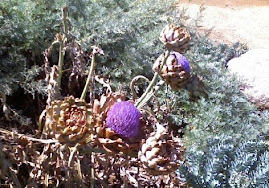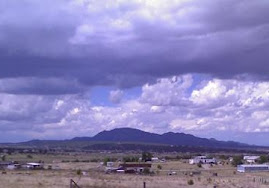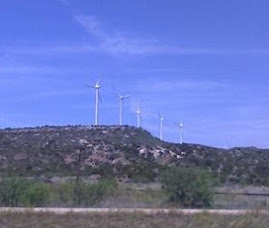HURRICANES AND WEATHER
Tropical Pacific is quiet but there is newly formed Tropical Storm Bonnie over the Bahamas on the Atlantic side. The storm will bring rain to Florida over the next day or so and is expected to hit somewhere along the Gulf coast Sunday. Latest cone of uncertainty from The National Hurricane Center takes the center to south central Louisiana on Sunday afternoon. There has been a lot of shear from a nearby upper low but the low may be moving away enough that the storm could intensify more than forecast. Remember, that intensification forecasting is very error prone. Also, most of the most popular tropical forecasting models have the storm hitting Louisiana to Mississippi later in the weekend but the ensemble models (all of the forecasting models) show a spread which includes the upper Texas coast. Bottom line...too soon to tell. So, be prepared for anything at this point.
Houston, there will be some scattered storms on Friday. As we get on the west side of the storms circulation Saturday/Sunday, expect drier air to arrive--but it will be hot! Deviation of path further west, will put us in a wet flow. So stay tuned.
There is also a disturbance in the western Gulf that will be hitting northern Mexico in the next day or so...only a 30% chance of making tropical storm before landfall. Expect rain in northern Mexico and south Texas through the early part of the weekend.
Friday will be hot for the desert southwest with highs 100+ all the way to Reno. Also very hot for DC...could hit the century mark. Stormy for Florida with highs in the 80s. 60s and 70s for coastal California, Pacific Northwest and northern states. Some severe weather possible form the Midwest to New York. Elsewhere, highs mainly in the 90s.
SPANISH WORD OF THE DAY
Let's do snake or culebra or serpiente, pronounced coo-LAY-brah or sair-pee-EHN-tay respectively. Where did cold weather help with a culebra problem? Find out in the AND MORE section.
Too hot or too rainy (or too many mosquitos) to play outside? Let the kids exercise their brains by watching my award winning Spanish language DVDs, Let's Learn Spanish with Frank & Paco. You can find Volumes 1 and 2 on the shelf (in the education section) at Barnes & Noble stores or you can order them from http://www.frankandpaco.com, http://www.amazon.com, http://www.bn.com, http://www.bestbuy.com, or http://www.ebay.com/. Our ESL (English as a Second Language) version can be found at http://www.frankypaco.com.
AND MORE
Favorite Thing About Summer Poll - Closed
My poll about what you like most about summer--is closed. 33% of you said swimming or other...gosh I wish I knew what the other thing is!!! 22% said vacation. 11% said the kids being out of school. 0% said summer movies or the heat. Only one answer was allowed. Thanks to all who participated and I will have a new poll in my next post.
Best Time to Go to Galveston/Schlitterbahn
Sarah and I headed to Galveston this past Monday afternoon--for those of you in Houston, you might recall that it was quite a gully washer that day. Well, everyone thought I was crazy, but I had a pretty good idea that the weather would be fine in Galveston due to the advancement of the sea breeze front (a part of the stormy pattern in Houston). There were a few things going on meteorologically including the high pressure ridge which had brought hot and rain-free weather for days, had weakened. Other contributing factors was a large enough temperature difference between the air over land and over the water...it needs to be at least 6 degrees Fahrenheit. And, a decent onshore flow...in general the winds need to be less than 10 kt flowing offshore to onshore. The stronger the onshore flow, the further inland the storms can penetrate. Around here, the sea breeze front usually comes in during the late morning into the early afternoon. So, if you are heading to Galveston in the afternoon, the storms should have already passed.
And it was a perfect day...the rain in Houston kept the crowds away and there was a residual overcast which kept it cooler. Sarah and I had a ball. We actually made a stop at the beach first...to pick up shells, sand and driftwood for a summer science project--the original reason for our trip. But hey, since we were there--we had to hit Schlitterbahn (doesn't close until 8 pm and believe me, we closed it down).
Come to find out, if you go to Schlitterbahn in Galveston after 3 pm, it is cheaper--$31.99 for 12 to 55 and $25.99 for 3 to 11 or those 55+. If you go all day, the price is $39.99 and $31.99 respectively. But if you go to HEB, you can get those full day summer season tickets for 2 to 3 dollars cheaper. Btw, Schlitterbahn summer season ends September 19th.
Friend's Hole Punch Cloud Photo Makes Cover of June issue of Bulletin of the American Meteorological Society
When I got my latest issue of BAMS, I was excited to a familiar looking photo of a hole punch cloud. I remember seeing the photo when shown by my friend and then co-councilor of the National Weather Association, Alan Sealls. He presented a paper on the topic at one of our annual conferences. In First of all, you have probably seen these kind of configurations before. It is usually an altocumulus or cirrocumulus cloud deck with a hole in it and then some clouds in the middle. It can be quite dramatic. The article in this issue of BAMS provided a complex, technical discussion. One popular school of thought discussed by the article's authors is that there is supercooled air in the hole (air that when hit by the exhaust/particles from aircraft allows the rapid formation of ice cools). The latent heat released from freezing warms the surrounding air sufficiently to evaporate water out of the surrounding air...forming a hole. There is also a similar type of effect in what are called canal clouds...streaks of clear air with a thin line of clouds in the middle where due to the condensation trails from aircraft. Anyway, Alan is still the Chief Meteorologist WKRG in Mobile, AL. To learn more about him, check out the following link:
http://www.wkrg.com/dashboard_main/profile/11/
Last Winter Helped Florida with Python Problem
Also in the June issue of BAMS, a brief report about the benefit of last year's unusually cold winter in Florida. Over the decades, non-native animals such have Burmese and African pythons as well as some non-native iguanas and fish have wreaked havoc on the existing ecosystem. Burmese pythons have been an especially big problem because they have huge appetites and were eating some of the endangered local species (making them more endangered). Where did these animals come from--the speculation is that they were abandoned by pet owners and perhaps escaped from pet shops damaged by hurricanes.
Have a safe weekend everyone!
Cecilia Sinclair
Wonder Weather Woman
HONORING RUTH IN HOUSTON!
13 years ago




























.jpg)




.jpg)




.jpg)
.jpg)
.jpg)

















